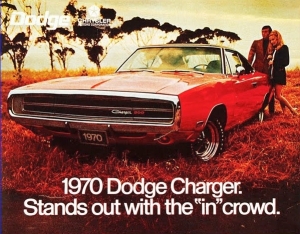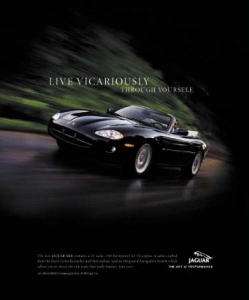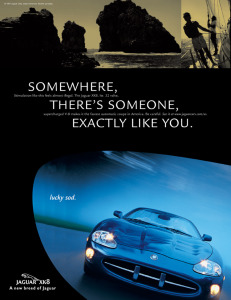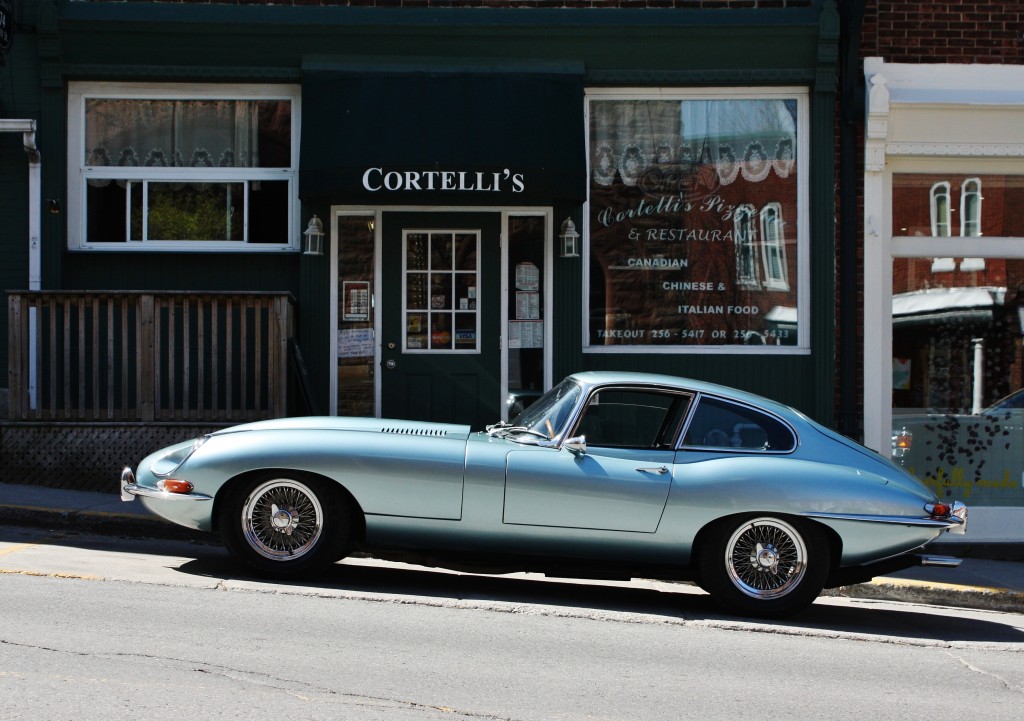Every now and then, a group of us gets to talking about car commercials, and I get yet another chance to mention my favourite vehicle ad of all time.
No, not Lee Iacocca’s “If you can find a better car, buy it” Chrysler commercial from 1982 (though that is a classic, and pure marketing genious). I’m talking print ads.
TV commercials can be entertaining, but print ads can be everything their motion picture brethren are, too – visually arresting, thought provoking, emotionally stimulating – everything that a good commercial needs to sell you a product you don’t really need (but really, really want).
Long ago, at the dawn of the 21st century, I wrote a paper for a university advertising course I had enrolled in as a fun elective. We had just finished studying the eras of modern advertising – examining print ads from the Victorian era to the 1990s and learning the key themes that dominated each era.
I choose to focus my paper on – what else? – the world of automotive advertising, something that had always fascinated me.

Though it embraced counter-culture identity, Chrysler’s hippie-era ads still equate belonging to a group with happiness, satisfaction and status.
Focusing on the latter half of the 20th century, I worked through the counter-culture era (a period exploited by the Chrysler division, with its ‘Dodge Material’ and ‘Scat Pack’ ads), before moving on to the ‘Value Era’ of oil crisis/recession-plagued America in the mid ’70s to early ’80s (“$17 less than Caprice!”).
Rather than focusing on lifestyles, the Value Era emphasized respect for pocketbooks and bank accounts. Clearly, not the sexy, titillating stuff that had proceeded it.
A very annoying era followed these, one that seemed to define the 1990s. If you wanted to sell a car, dishwasher, or anything else in the ’90s, you had to make the buyer aware that they’d be joining a community.
Yes, the buyer would now be part of a quasi-commune populated by like-minded, like-interested people. “You’re really not alone when you buy this product, see? There are others like you.”
Depending on your world view, it was either a comforting, cosy sentiment, or an individual-destroying collectivist nightmare. And no car company adopted this strategy more than plastic-clad GM division Saturn.
Describing itself as “A different kind of company” (um, what?), Saturn’s commercials were festooned with members of the Saturn-buying community. Their print ads were part classic sales pitch, part family reunion newsletter.
A memorable 1996 episode of the sitcom Ellen poked fun at the Saturn ad campaign, depicting the title character’s friend purchasing a new ‘Rapture’, only to find herself an unwilling member of a creepy cult-like collective. After overbearing, stalker-like requests to join baseball teams and attend picnics, Ellen is forced to ‘rescue’ her friend, eventually breaking her lease agreement by holding a Rapture sedan hostage with a cigarette lighter.
I wrote my term paper towards the end of this cloying era, or maybe at the very beginning of a new one. At the time, one memorable ad stood out – one that spoke to me personally while shattering the message spread by the likes of Saturn.
The ad, which appeared around 1999 (give or take a year) was for the Jaguar XK8 convertible – a beautiful car whether coupe or drop top. Pictured in the ad was a man driving solo (and fast) down a twisty, shade-dappled highway, with the message “Live vicariously through yourself”.
Who doesn’t want to be the guy piloting that Jag? I mean, really?
That sort of appeal is easy to understand, after all, all car ads want you to picture yourself in the driver’s seat. However, the message being telegraphed by Jaguar was decidedly different from that of the community-minded Saturn.
Live vicariously… through yourself.
Some could see this message as being indulgent, selfish and consumerist. A hedonist celebration of capitalism’s ill-gotten gains. I, on the other hand, see it as a big middle finger to the concept of collectivism – a celebration of the individual. A message that it’s okay to go your own way and enjoy life on your own terms.
That one can still exist and participate within a society without having to adopt all of its norms and expectations.
That this ad originated from the country that brought us the Libertarian-themed 1960s TV show The Prisoner maybe shouldn’t come as a surprise.
(See show intro and highlights, including McGoohan’s bitchin’ Lotus Seven, here: http://www.youtube.com/watch?v=tra3Zi5ZWa0)
Another ad for the XK8 carried the theme along with a similar, if somewhat confusing, message.
The turn of the century now seems a lifetime away, and I couldn’t begin to describe the era of advertising we now find ourselves in. Like most normal people, I try to avoid exposure to commercials as much as humanly possible.
Still, by thumbing its nose at the establishment and prevailing attitudes, Jaguar cranked out a real gem of an ad all those years ago. By reacting – and rebelling – against the norm, Jaguar created a new counter-culture.
A counter-culture of one.
Links:



